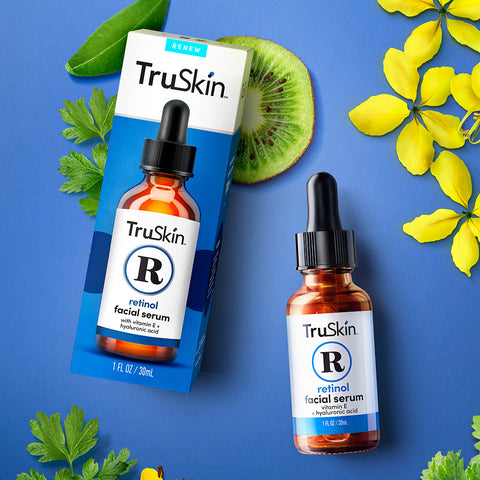
5 Things You Never Knew About Adult Acne
Struggling with acne breakouts even though you’re no longer 15 years of age? We hear you. Adult acne: it’s a thing.
Adult acne affects around 85 percent of adults across the world. Now, correct us if we’re wrong (math was never our strong point), but with the world population being around 7.8 billion at last count, and approximately half of the world population being between 25 and 65 that amounts to roughly 3.3 billion people being plagued with breakouts at some point during their adult lives.
More bad news: adult acne is more likely to affect women than men.
Dang!
Chances are, therefore, you know a thing or two about dealing with whiteheads, blackheads and/or pimples way past the age of 25, correct? But why do you get adult acne? And more importantly, what can you do to keep your pesky pimples in check?
Here’s five things you need to know to help you get a firm grip on your adult acne…
1. Adult Acne Is Caused By One Thing And One Thing Alone
Just like the breakouts you had as a teenager, adult acne occurs when your hair follicles become blocked with excess oil and dead skin cells, clogging up your pores and forming a kind of ‘plug.’ It’s as simple as that. Scrap that, it’s not simple at all, because this plugged follicle can then form into a number of things...
If the plug bulges out above the surface of your skin it creates a whitehead, but if it opens up, it will oxidize with the air and cause a blackhead. And you know all that bacteria that breeds on your skin? Well, if this infects your blocked pore, it will cause a much larger, angrier kind of beast – namely a papule, pustule, nodule or cyst. Or as you probably call it, a zit.
Most adult acne takes the form of zits.
2. Not All Adult Acne Is The Same
While the cause of adult (and indeed all) acne is always the same, it’s generally split into two different types: persistent and late- or adult-onset acne.
Persistent acne is when it never lets up from your teenage years, continually plaguing you with pimples and carrying on right the way through to adulthood. Late-onset acne, however, is the stuff that appears on any of you who didn’t have acne as an adolescent. Instead, it decides to strike later on in your life, just when you least suspected it.
Neither type of adult acne is fun and both have the same end result, but it’s worth noting the difference.
3. Many Factors Can Trigger Adult Acne Breakouts
While adult acne is caused by the simple process of excess sebum and dead skin cells blocking your pores, the reason this happens to you and not the next person are many. Acne, as a rule, runs in the family, so first and foremost, you can 100 percent blame your parents. But this is not something you can control, so best not get too angry with them, OK? Instead, try to pinpoint your triggers.
According to the American Academy of Dermatolgy (AAD), most cases of late-onset acne are hormonal and occur during your periods or through the menopause when your hormones are literally all over the place. During menopause, in particular, your estrogen levels start to drop, while androgens like testosterone remain far more constant, creating an imbalance that causes your skin to freak out. If this is happening to you, make an appointment with your doctor to discuss a plan of action. Hormone replacement therapy can be a very effective way to keep your hormones – and therefore your skin – under control.
But it’s not all about genetics and hormones – there are plenty of other factors that can trigger your skin to break out. Chocolate and pizza? Baloney. But other things? For sure. Certain medications can overstimulate your sebaceous glands, for example, and stress is a real biggie. You should also be careful not to use pore-blocking skincare, makeup or even hair styling products if you’re spots are concentrated around your hairline. Any product that contains occlusives like rich oils and butters will create a physical barrier on the surface of your skin which will block your pores and play havoc with acne-prone skin.
4. Acne Scarring Is Often Worse Than The Pimples Themselves
Sure, acne sucks, but the scarring it leaves behind? Way more annoying and far harder to get rid of.
To avoid your spots leaving scars, never pick, prod or press at them – and if you really can’t help it, at least wash your hands first and clean the problem area afterwards to prevent bacteria from spreading and causing inflammation (which is what causes discoloration and scarring in the first place).
Our Charcoal Face Wash is great for detoxifying oily skin and if you follow it up with Tea Tree Serum, you should be on to a sure winner. Tea tree oil is anti-bacterial and anti-inflammatory so it’s ideal for spot-treating specific areas of your skin that simply won’t behave.
Finally, always wear sunscreen. Post-inflammatory pigmentation (PIH) is a type of hyperpigmentation that occurs when trauma like an acne spot causes an overproduction of melanin in that area, turning the skin dark and patchy. And it often stays like this permanently. This is the same melanin that causes your skin to tan in the sun, so by protecting your skin from damaging UV radiation you’ll reduce your risks of PIH. Stat.
5. Retinol Is One Of The Best Ingredients For Treating Adult Acne
How to get rid of acne is the million dollar question and one that Google is asked by thousands of people on a daily basis. Of course, managing your triggers is a great start, but it’s not always that easy. Which is why awesome skincare is a must.
It’s tempting to want to scrub away at super oily skin with harsh cleansers and toners. Don’t do that, it’ll just make matters worse. Instead, the key is yes, to keep your skin clean and free of bacteria-inducing oils and debris, but to do so gently with calming, balancing products that are free of harsh chemicals and sulfates.
One of our favorite ingredients for helping treat adult acne is retinol. Most people think of retinol as the gold-standard in anti-aging and they're not wrong. But it’s also crackerjack for dealing with breakouts. Retinol works by communicating with your skin on a deeper level to decrease sebum production, reduce inflammation and, most importantly, help regulate skin cell turnover which stops dead skin cells from hanging around at the surface and clogging up your pores. What’s more, this means you get to create a better foundation at a surface level, so the rest of your skincare ingredients (salicylic acid, always a winner) get a better chance to do their job properly.
Try our Retinol Moisturizer for a gentle but effective way to reduce acne and keep your skin balanced and moisturized without weighing it down.
Final thought: If your adult acne is severe, persistent and painful, always visit your doctor or a dermatologist for professional advice and a targeted treatment plan. Chances are you might need more than smart skincare alone...















